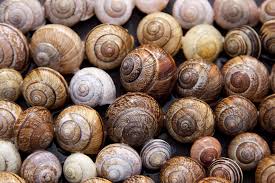Stamp: Carinate Rock Shell (Thais mutabilis) (Qatar 1995)
Carinate Rock Shell (Thais mutabilis) (Qatar 1995)
24 April (Qatar ) within release Gulf Environment Day goes into circulation Stamp Carinate Rock Shell (Thais mutabilis) face value 1 Qatari riyal
| Stamp Carinate Rock Shell (Thais mutabilis) in catalogues | |
|---|---|
| Michel: | Mi:QA 1058 |
Stamp is square format.
Also in the issue Gulf Environment Day:
- Stamp - Precious Wentletrap (Epitonium scalare) face value 75;
- Stamp - False Venus Comb (Murex scolopax) face value 1;
- Stamp - Carinate Rock Shell (Thais mutabilis) face value 1;
- Stamp - Sea Snail (Fusinus arabicus) face value 1;
- Stamp - Giant Spider Conch (Lambis truncata sebae) face value 1;
- Stamp - Feathered Cone (Conus pennaceus) face value 75;
- Stamp - Girdled Horn Shell (Cerithidea cingulata) face value 75;
- Stamp - Kuester's Murex (Hexaplex kuesterianus) face value 75;
- Se-tenant - Gulf Environment Day face value 4*1;
- Se-tenant - Gulf Environment Day face value 4*75;
Stamp Carinate Rock Shell (Thais mutabilis) it reflects the thematic directions:
Marine life, or sea life or ocean life, refers to the plants, animals and other organisms that live in the salt water of the sea or ocean, or the brackish water of coastal estuaries. At a fundamental level, marine life helps determine the very nature of our planet. Marine organisms produce much of the oxygen we breathe. Shorelines are in part shaped and protected by marine life, and some marine organisms even help create new land. Altogether there are 230,000 documented marine species, including over 16,000 species of fish, and it has been estimated that nearly two million marine species are yet to be documented. Marine species range in size from the microscopic, including plankton and phytoplankton which can be as small as 0.02 micrometres, to huge cetaceans (whales, dolphins and porpoises) which in the case of the blue whale reach up to 33 metres (109 feet) in length, being the largest known animal.
A seashell or sea shell, also known simply as a shell, is a hard, protective outer layer created by an animal that lives in the sea. The shell is part of the body of the animal. Empty seashells are often found washed up on beaches by beachcombers. The shells are empty because the animal has died and the soft parts have been eaten by another animal or have rotted out. The term seashell usually refers to the exoskeleton of an invertebrate (an animal without a backbone). Most shells that are found on beaches are the shells of marine mollusks, partly because many of these shells endure better than other seashells.
Environmental protection is the practice of protecting the natural environment by individuals, groups and governments.Its objectives are to conserve natural resources and the existing natural environment and, where it is possible, to repair damage and reverse trends.



